|
The photo above, from Wikipedia, has the Topkapi Palace on the left, the Hagia Sophia in the center and the Blue Mosque on the right. We would visit all three of these buildings during our day and a half in Istanbul. |
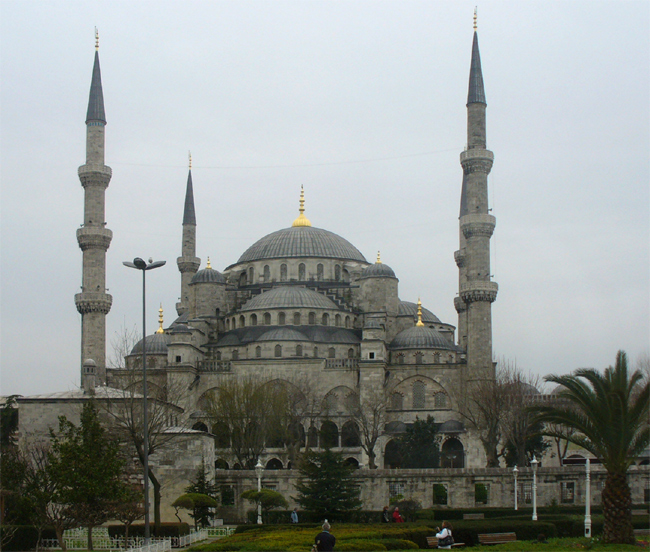 Our first stop was at the famous Blue Mosque.
Our first stop was at the famous Blue Mosque.
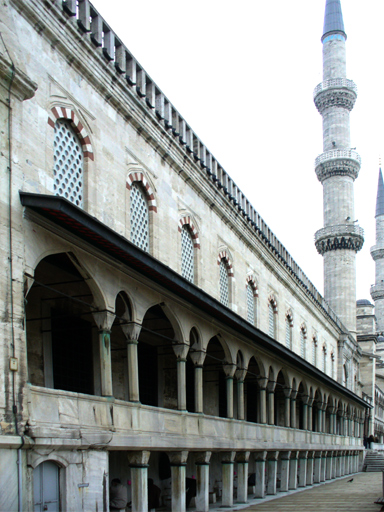
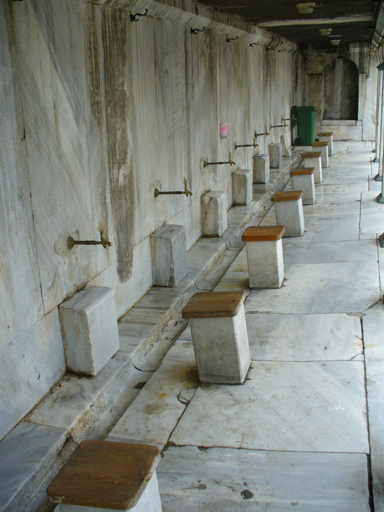 Here the men could wash their hands and feet before entering the mosque for prayer.
Here the men could wash their hands and feet before entering the mosque for prayer.
 A side entrance to the mosque.
A side entrance to the mosque.
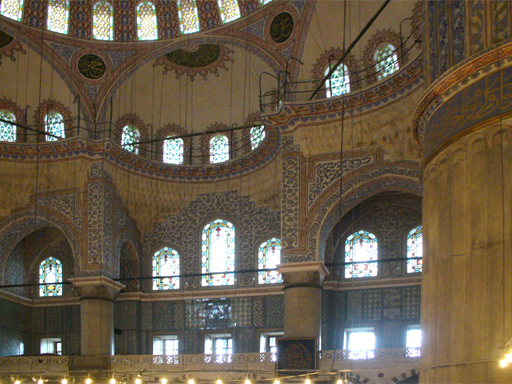



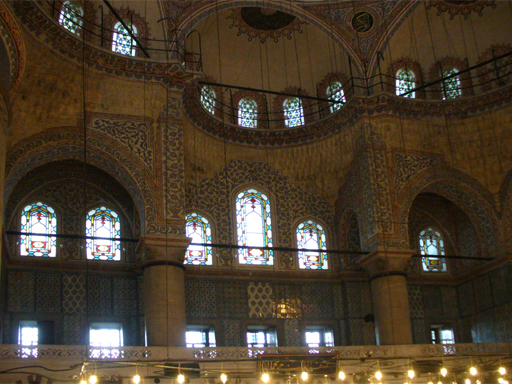
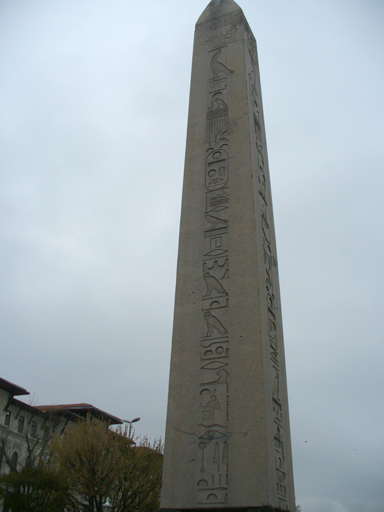 The Obelisk of Theodosius, carved in Egypt about 1450 BC and brought to Constantinople by Theodosius in 390 AD.
The Obelisk of Theodosius, carved in Egypt about 1450 BC and brought to Constantinople by Theodosius in 390 AD.
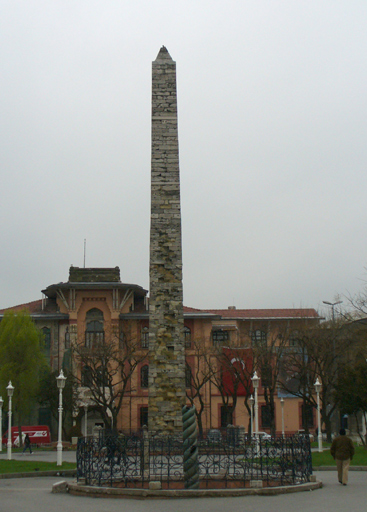 In the distance, a rough stone obelisk repaired by Constantine. It had been covered by bronze plates which were ripped off during the Fourth Crusade.
In the distance, a rough stone obelisk repaired by Constantine. It had been covered by bronze plates which were ripped off during the Fourth Crusade.
In front of the obelisk is a spiral column, like snakes coming out of a hole in the ground. It commemorated a victory over the Persians.
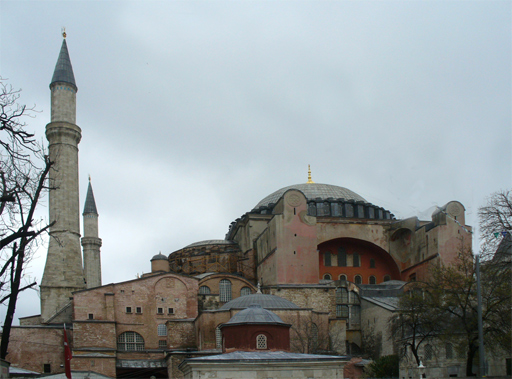 We walked to the Aya Sofya, the Church of Divine Wisdom, constructed by Justinian in 537 AD. The dome, supported by pillars and four half-domes, collapsed in 558 because of an earthquake and was then reduced in size.
We walked to the Aya Sofya, the Church of Divine Wisdom, constructed by Justinian in 537 AD. The dome, supported by pillars and four half-domes, collapsed in 558 because of an earthquake and was then reduced in size.
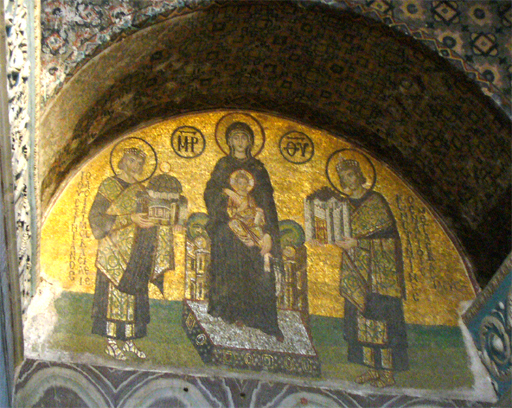 Over the entrance was a mosaic showing the Virgin and Christ between Constantine and Justinian. To the right Justinian is offering to Mary a model of the new city of Constantinople. To the left Justinian is offering a model of the new church.
Over the entrance was a mosaic showing the Virgin and Christ between Constantine and Justinian. To the right Justinian is offering to Mary a model of the new city of Constantinople. To the left Justinian is offering a model of the new church.
 A mosaic over the Imperial Door shows Christ on His throne and Leo VI kneeling before Him.
A mosaic over the Imperial Door shows Christ on His throne and Leo VI kneeling before Him.
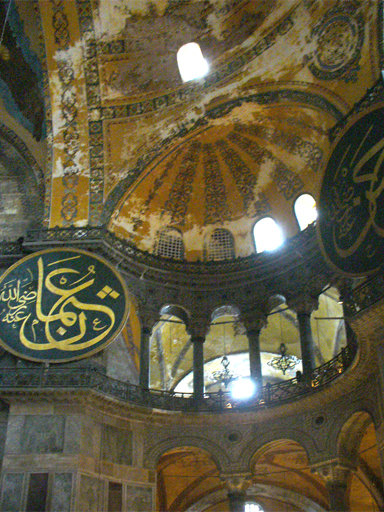 An interior shot, showing some of its former beauty. After the Ottoman conquest of 1453, it was turned into a mosque, the the mosaics were plastered over and the large medallions with the names of Allah and Mohammed were placed there.
An interior shot, showing some of its former beauty. After the Ottoman conquest of 1453, it was turned into a mosque, the the mosaics were plastered over and the large medallions with the names of Allah and Mohammed were placed there.
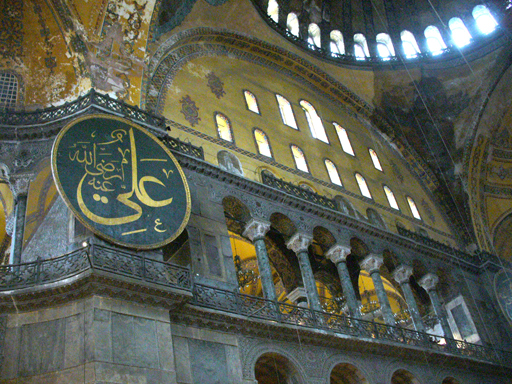
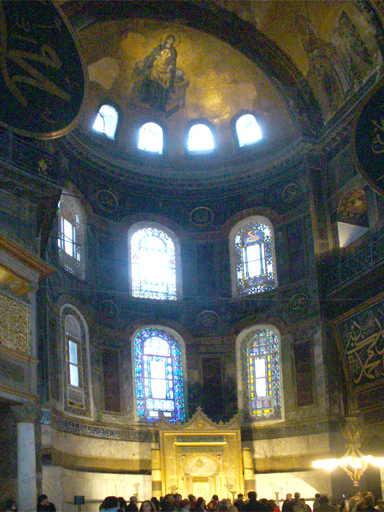 This shows a Moslem altar at floor level and a mosaic of Christ and Mary on the dome above.
This shows a Moslem altar at floor level and a mosaic of Christ and Mary on the dome above.
 A closeup of this mosaic.
A closeup of this mosaic.
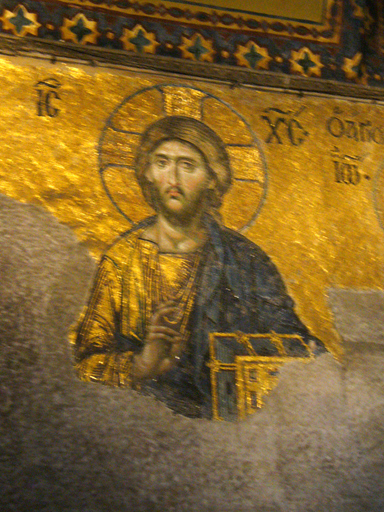 A mosaic of Christ which has been damaged by the plaster which covered it.
A mosaic of Christ which has been damaged by the plaster which covered it.
 A last look at the church.
A last look at the church.
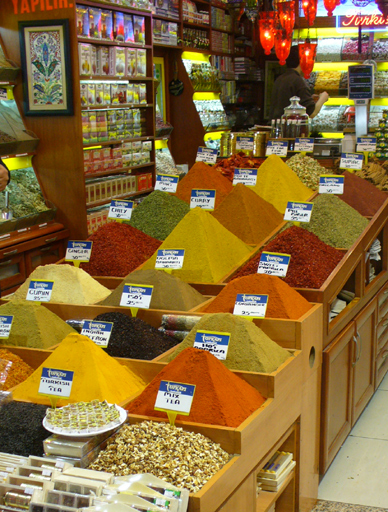 The next day we visited the Spice Market with its displays of spices and other goods.
The next day we visited the Spice Market with its displays of spices and other goods.
 From there we went to the Palace of the Sultans, the Topkapi Palace. Mehmet the Conqueror built the first Topkapi Palace shortly after the conquest in 1453. Sultan after Sultan played out the drama of the Ottoman sovereign until the 19th century. After that the sultans preferred to live in ostentatious palaces on the shores of the Bosphorus.
From there we went to the Palace of the Sultans, the Topkapi Palace. Mehmet the Conqueror built the first Topkapi Palace shortly after the conquest in 1453. Sultan after Sultan played out the drama of the Ottoman sovereign until the 19th century. After that the sultans preferred to live in ostentatious palaces on the shores of the Bosphorus.
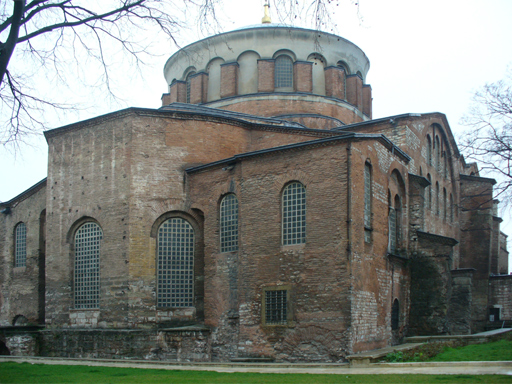 This is the Church of Divine Peace, built during the reign of Justinian about 540. When Mahmout began building the palace, the church was within the grounds. It was used as an arsenal for centuries, then an artillery museum and now as concert hall.
This is the Church of Divine Peace, built during the reign of Justinian about 540. When Mahmout began building the palace, the church was within the grounds. It was used as an arsenal for centuries, then an artillery museum and now as concert hall.
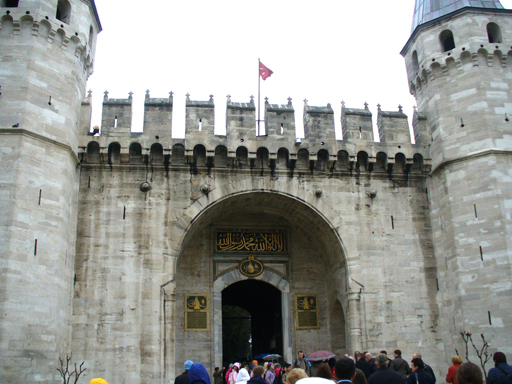 The gate to the Second Court built by Suleyman the Magnificent in 1524.
The gate to the Second Court built by Suleyman the Magnificent in 1524.
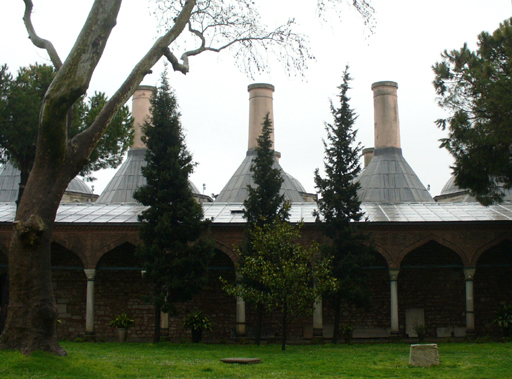 The chimneys for the kitchen
The chimneys for the kitchen
 Many beautiful buildings could be seen.
Many beautiful buildings could be seen.
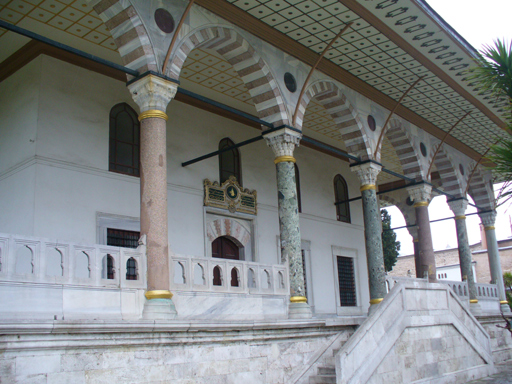
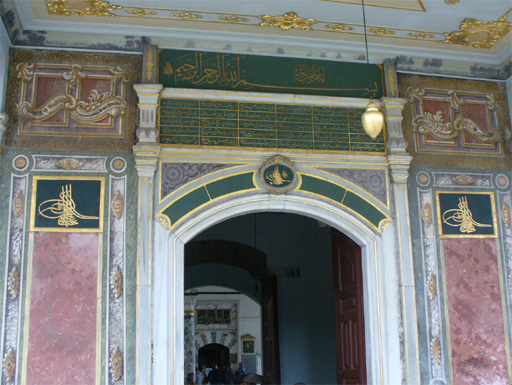
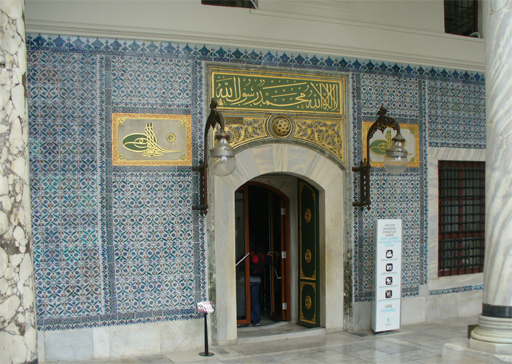
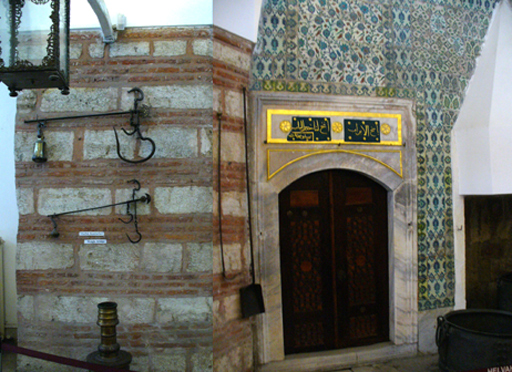 The fireplace in the kitchen.
The fireplace in the kitchen.
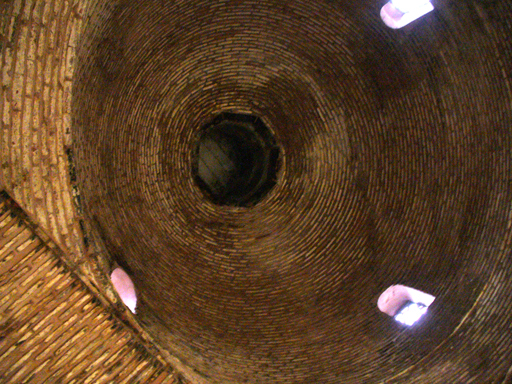 One of the chimneys from inside the kitchen.
One of the chimneys from inside the kitchen.
 A closeup of the gate as we leave the Palace.
A closeup of the gate as we leave the Palace.
 One of the many gates of the Grand Bazaar.
One of the many gates of the Grand Bazaar.
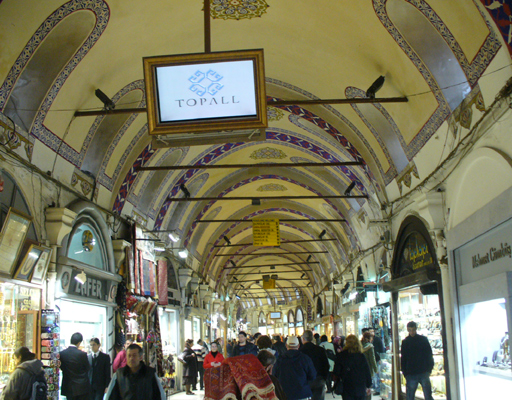 The interior of the Grand Bazaar with just a few of its 4000 shops.
The interior of the Grand Bazaar with just a few of its 4000 shops.
This is the end of our trip, as we prepare for the flight home in the morning. .
